Archduke Hubert Salvator of Austria
Last updated| Archduke Hubert Salvator | |||||
|---|---|---|---|---|---|
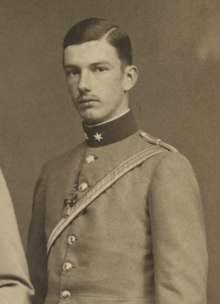 | |||||
| Born | 30 April 1894 Schloss Lichtenegg, Wels, Upper Austria, Austria-Hungary | ||||
| Died | 24 March 1971 (aged 76) Schloss Persenbeug, Persenbeug-Gottsdorf, Lower Austria, Austria | ||||
| Spouse | Princess Rosemary of Salm-Salm | ||||
| Issue | Archduke Friedrich Salvator Agnes Christina, Princess Karl Alfred of Liechtenstein Archduchess Maria Margaretha Archduchess Maria Ludovica Archduchess Maria Adelheid Elisabeth, Princess Heinrich of Auersperg-Breunner Archduke Andreas Salvator Josepha, Countess Clemens von Waldstein Valerie, Margravine of Baden Maria Alberta, Baroness Alexander von Kottwitz-Erody Archduke Markus Emanuel Salvator Archduke Johann Maximilian Salvator Archduke Michael Salvator | ||||
| |||||
| House | Habsburg-Lorraine | ||||
| Father | Archduke Franz Salvator of Austria, Prince of Tuscany | ||||
| Mother | Archduchess Marie Valerie of Austria | ||||
Archduke Hubert Salvator of Austria, Prince of Tuscany (German : Hubert Salvator Rainer Maria Joseph Ignatius, Erzherzog von Österreich, Prinz von Toskana; 30 April 1894 – 24 March 1971) was a member of the Tuscan line of the House of Habsburg and Archduke of Austria, Prince of Tuscany by birth. [1]
Contents
Life
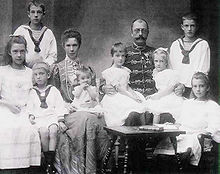
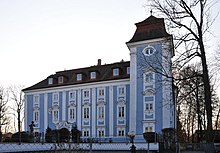
Hubert Salvator was born in Schloss Lichtenegg, Wels, Upper Austria, Austria-Hungary, the third child and second-eldest son of Archduke Franz Salvator of Austria, Prince of Tuscany and his wife Archduchess Marie Valerie of Austria. Through his mother, he was a grandson of Franz Joseph I of Austria, and through his father, he was a great-grandson of Leopold II, Grand Duke of Tuscany.
Hubert Salvator married Princess Rosemary of Salm-Salm, the second eldest child and daughter of Emanuel Alfred, Hereditary Prince of Salm-Salm and his wife Archduchess Maria Christina of Austria, on 25 November 1926 civilly at Anholt Castle in Westfalen and religiously on 26 November 1926. [2]
World War One
During the First World War he served as an Oberleutnant and Rittmeister in Dragoon Regiment No. 4 . He took part in trench warfare on Bug and Dubno. He was then a riding Ordonnanzoffizier with the 9th Gebirgsbrigadekommando in the Dolomites. [3] In 1914 Hubert Salvator received the Order of the Golden Fleece.
From September to November 1917, on behalf of Emperor Charles I, he took over the Austrian mission to the Orient to Asia Minor, Syria and Palestine together with the Orientalist Alois Musil. [4] The mission was intended to protect the interests of the monarchy in the Ottoman Empire, especially in competition with its ally Germany. [5] Hubert Salvator was in charge of the mission's “representative leadership” and the head of the mission was the expert Musil. The mission, officially sent to inspect troops and maintain contact with Ottoman officials and oriental Christians, also served Emperor Charles' dream of a "religious protectorate of the Habsburgs in the Orient". Charles wanted to take over the cultural protectorate of France over the oriental Christians. [6] [4] The mission had economic, scientific-cultural and propaganda motives, but the military aspect was only a cover. [5]
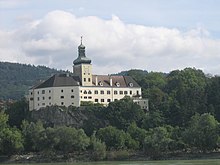
The experienced Austrian ambassador in Constantinople János von Pallavicini, who had tried in vain to prevent the mission because he feared conflict with the Ottoman government, later judged that the Archduke had correctly grasped the situation in Palestine and Syria. [5] [4] Feldmarschallleutnant Joseph Pomiankowski, the imperial and royal military representative in the Ottoman Empire noted that Hubert Salvator left the best impression due to his very pleasant appearance, his modest, amiable demeanor and his quiet seriousness.’’ [4]
After the end of Austria-Hungary

After the end of the Habsburg Monarchy Hubert Salvator made a declaration of renunciation after the passing of the Habsburg Law in 1919 and was therefore allowed to stay in Austria. In 1920 he received his doctorate in law from the University of Innsbruck . Apparently expelled from the Order of the Golden Fleece because of the declaration of renunciation, he and his father were readmitted in November 1922. [7]
In Persenbeug, Hubert Salvator successfully managed a large forestry operation. [3] Because of his extensive holdings, he was nicknamed “Schleusen-Hubsi.” [8] He inherited the Kaiservilla in Bad Ischl from his mother in 1924. During the First Republic and the Federal State Hubert Salvator was a high-ranking Heimwehr functionary as Gauführer. [9] He was politically persecuted under National Socialist rule. [10]
During the Soviet occupation after the Second World War, Hubert Salvator was chairman of the municipal committee of Persenbeug. [11] [3] He lived and ultimately died at the age of 76 at Persenbeug Castle, which he owned together with eight other Habsburg family members. [12]
Issue
Hubert Salvator and Rosemary had thirteen children together: [3]
- Archduke Friedrich Salvator of Austria (27 November 1927 – 26 March 1999) married Countess Margarethe Kálnoky de Kőröspatak
- Archduke Leopold Salvator of Austria (16 October 1956)
- Archduchess Marie Bernadette of Austria (10 February 1958) married Rupert Wolff and has issue
- Archduke Alexander Salvator of Austria (12 April 1959) married Countess Marie Gabriele von Waldstein-Wartenberg on 5 June 1993
- Archduchess Annabella of Austria (5 September 1997)
- Archduchess Tara of Austria (6 February 2000)
- Archduke Constantin of Austria (4 January 2002)
- Archduke Paul Salvator (4 November 2003)
- Archduchess Katharina of Austria (1 November 1960) married Niall Brooks on 9 April 1988 and has issue.
- Archduchess Agnes Christina of Austria (14 December 1928 – 31 August 2007) married Prince Karl Alfred of Liechtenstein, with issue.
- Archduchess Maria Margaretha of Austria (born 29 January 1930)
- Archduchess Maria Ludovica of Austria (31 January 1931 – 17 April 1999)
- Archduchess Maria Adelheid of Austria (28 July 1933 – 10 October 2021)
- Archduchess Elisabeth Mathilde of Austria (18 March 1935 – 9 October 1998) married Prince Heinrich of Auersperg-Breunner and has issue.
- Archduke Andreas Salvator of Austria (28 April 1936) married to Maria de la Piedad Espinosa de los Monteros y Rosillo on 22 April 1936 and later divorced with marriage annulled, had no issue. Married secondly to Countess Valerie Podstatzky von Lichtenstein with issue.
- Archduke Thadeus Salvator of Austria (30 March 2001)
- Archduke Casimir Salvator of Austria (27 July 2003)
- Archduchess Alicia of Austria (15 February 2005)
- Archduchess Josepha Hedwig of Austria (2 September 1937) married Count Clemens von Waldstein-Wartenberg with issue.
- Archduchess Valerie Isabella of Austria (23 May 1941) married Maximilian, Margrave of Baden, with issue.
- Archduchess Maria Alberta of Austria (June 1944) married Baron Alexander von Kottwitz-Erdődy, with issue.
- Archduke Markus Emanuel Salvator of Austria (2 April 1946)
- Archduke Johann Maximilian of Austria (18 September 1947) married Annemarie Stummer
- Countess Caroline von Habsburg (12 February 1978 – 10 March 2007) died before being elevated to Archduchess of Austria.
- Archduchess Stephanie of Austria (10 July 1979) married Nikolaus von Halgbebauer with issue.
- Archduchess Isabella of Austria (3 November 1981)
- Archduke Michael Salvator of Austria (born 2 May 1949) married Eva Antonia von Hofmann
- Archduchess Maria Christina of Austria (9 November 1997)
Arms
Ancestry
| Ancestors of Archduke Hubert Salvator of Austria |
|---|
Related Research Articles

Ferdinand IV, Grand Duke of Tuscany was the last Grand Duke of Tuscany from 1859 to 1860.

Robert, Archduke of Austria-Este, was the second son of Karl I, (beatified) last Emperor of Austria-Hungary, and Princess Zita of Bourbon-Parma. He was also known as Robert Karl Erzherzog von Österreich.

Archduke Leopold Maria of Austria, Prince of Tuscany was the second son of Archduke Leopold Salvator, Prince of Tuscany and Infanta Blanca of Spain. At the fall of Habsburg monarchy he remained in Austria and recognized the new republic in order to marry Dagmar, Baroness von Nicolics-Podrinska. The couple had one daughter. After divorcing his wife in 1931, Leopold eventually emigrated to the United States where he became a naturalized American citizen under the name Leopold Lorraine, and where he remarried. He died in 1958 in Connecticut.
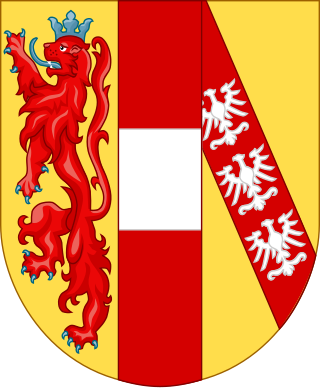
The House of Habsburg-Lorraine originated from the marriage in 1736 of Francis III, Duke of Lorraine and Bar, and Maria Theresa of Austria, later successively Queen of Bohemia, Queen of Hungary, Queen of Croatia and Archduchess of Austria. Its members are the legitimate surviving line of both the House of Habsburg and the House of Lorraine and inherit their patrimonial possessions and vocation to the Empire from their female line of the House of Habsburg and from the male line of the House of Lorraine.

Claudia Felicitas of Austria was by birth an Archduchess of Austria and by marriage Holy Roman Empress, German Queen, Archduchess consort of Austria, Queen consort of Hungary and Bohemia as the second wife of Leopold I.

Archduke Karl Salvator of Austria, was a member of the Tuscan branch of the House of Habsburg.

Princess Maria Immaculata of Bourbon-Two Sicilies was fifth child and second-eldest daughter of Ferdinand II of the Two Sicilies and his wife Maria Theresa of Austria. Through her marriage to Archduke Karl Salvator of Austria, Maria Immaculata became an Austrian Archduchess.

Archduke Peter Ferdinand of Austria, Prince of Hungary and Bohemia was an Austro-Hungarian archduke and an army commander in the Austro-Hungarian Army during World War I.

Archduke Franz Salvator of Austria was the son of Archduke Karl Salvator of Austria and Princess Maria Immacolata of Bourbon-Two Sicilies. He married Archduchess Marie Valerie in 1890, though, due to Marie Valerie's death in 1924, remarried in 1934 to Baroness Melanie von Riesenfels.
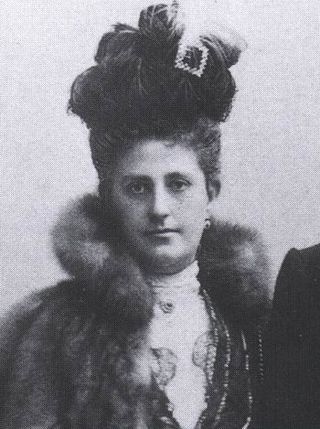
Archduchess Maria Theresa of Austria was a member of the House of Habsburg-Tuscany and Archduchess of Austria, Princess of Tuscany by birth. Maria Theresia was the eldest child and eldest daughter of Archduke Karl Salvator of Austria and his wife, Princess Maria Immaculata of Bourbon-Two Sicilies.

Archduke Leopold Salvator, Prince of Tuscany, was the son of Archduke Karl Salvator of Austria and Princess Maria Immaculata of Bourbon-Two Sicilies.
Princess Rosemary of Salm-Salm was a member of the princely House of Salm-Salm. Through her marriage to Archduke Hubert Salvator of Austria, Rosemary was a member of the Tuscan line of the House of Habsburg-Lorraine.

Archduchess Maria Christina Isabelle Natalie of Austria, full German name: Maria Christina Isabelle Natalie, Erzherzogin von Österreich was a member of the Teschen branch of the House of Habsburg-Lorraine and an Archduchess of Austria and Princess of Bohemia, Hungary, and Tuscany by birth. Through her marriage to Emanuel Alfred, Hereditary Prince of Salm-Salm, Maria Christina was also Hereditary Princess of Salm-Salm.

Archduke Gottfried of Austria, also styled as Gottfried Erzherzog von Österreich, was a member of the Tuscan line of the House of Habsburg-Lorraine, an Archduke of Austria, and Prince of Hungary and Bohemia. Gottfried assumed the title of titular Grand Duke of Tuscany, in spite of his grandfather Ferdinand IV's abdication of 1870.
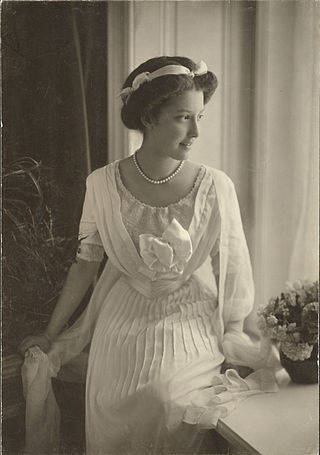
Archduchess Elisabeth Franziska Marie Karoline Ignatia Salvator was the eldest daughter of Archduke Franz Salvator of Austria and Archduchess Marie Valerie of Austria. Through her mother, she was a granddaughter of Emperor Franz Joseph I of Austria and through her father, she was a descendant of King George II of Great Britain.

Archduke Rainer of Austria was a member of the House of Habsburg-Lorraine, a member of the Tuscan branch of the Imperial House of Habsburg, an Archduke of Austria and Prince of Tuscany by birth. He was the eldest son Archduke Leopold Salvator of Austria, Prince of Tuscany. He served as officer in the Austrian army during World War I. At the fall of the Habsburg dynasty, he remained in Vienna and worked for a time as taxi driver. He died unmarried at the age of 34 from blood-poisoning.

Archduke Franz Josef of Austria–Tuscany was the fourth son of Archduke Leopold Salvator of Austria, Prince of Tuscany and Infanta Blanca of Spain. At the fall of Habsburg monarchy he moved to Barcelona, where he became a naturalized Spanish citizen. He married morganatically twice and had a daughter from his second marriage. During World War II he lived in the United States, working in the forestry industry. In 1955 he returned to Austria. He inherited the Carlist pretensions to the Spanish throne of his brother Archduke Karl Pius and called himself Duke of Madrid. He died in 1975.
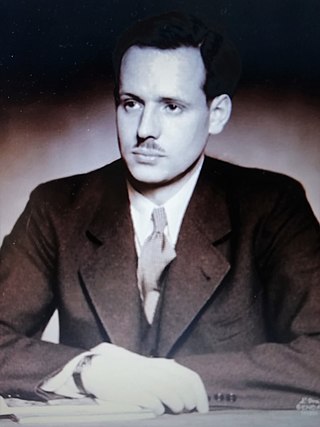
Prince Karl Alfred of Liechtenstein was a prince and brother of Franz Joseph II. He was the third child and second son of Prince Alois of Liechtenstein and Archduchess Elisabeth Amalie of Austria.
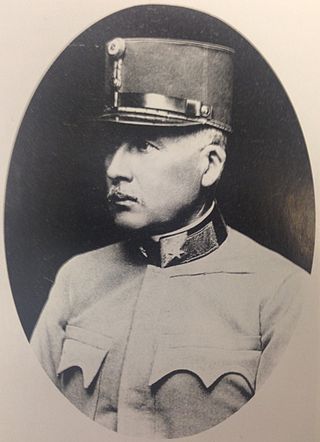
Józef Jan Klemens Pomiankowski was a lieutenant field marshal of the Austro-Hungarian Army and later general of the Polish Armed Forces. He was the military representative of the Austro-Hungarian military mission in the Ottoman Empire in the World War I, during which he was in charge of shaping Austrian policy on the Orient, often in competition with the allied German Empire.
Franz Josef Georg Clemens Maria Leopold Salvator, Prince of Altenburg was an Austrian ceramicist and sculptor. He was a member of the House of Habsburg-Lorraine. He was regarded as a leading modern ceramicist of Austria, and received awards including the Decoration of Honour for Services to the Republic of Austria.
References
- ↑ Leopold Auer (Hrsg.): Das Haus Österreich und der Orden vom Goldenen Vlies. Beiträge zum wissenschaftlichen Symposium am 30. November und 1. Dezember 2006 in Stift Heiligenkreuz. Leopold Stocker, Graz 2007, ISBN 978-3-7020-1172-7
- ↑ Énache, Nicolas (1999). La descendance de Marie-Thérèse de Habsburg, (in French). Paris: Éditions L'intermédiaire des chercheurs et curieux. pp. 142–145. ISBN 978-2-908003-04-8.
- 1 2 3 4 Brigitte Hamann (Hrsg.): Die Habsburger. Ein biographisches Lexikon. Piper, München 1988, ISBN 3-4920-3163-3,
